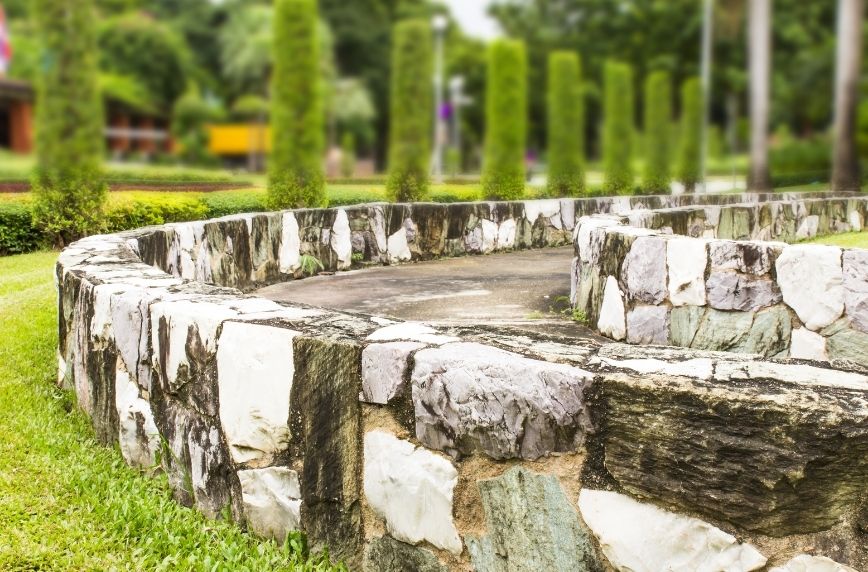When landscaping, there are solid, nonliving elements that form the boundaries between different portions of a home’s outdoor space. Hardscaping deals specifically with this aspect of landscaping. There are several materials that you might choose to incorporate in a yard to give it structure and enhance the beauty of the plants there. But what materials are best for hardscaping? We’ll address this question with this list.
Brick
Brick is a good choice for constructing your hardscape structures because of its resilience and the distinctive patterning that you get with it. You can lay it out to make charming walkways and or a patio. Depending on how you arrange the bricks, you can give off a more elegant or more casual ambiance with this material as well. Placing bricks in straight or curved lines can be laidback and rugged, while incorporating bricks in varying sizes and crisscrossing orientations can appear sophisticated. In either case, bricks’ inherent orderliness serves as a pleasant contrast against grass, mulch, shrubs, and trees.
Stone
With stone, you can instantly elevate landscaping in numerous ways. Just as with brick, stone can play into a rougher aesthetic or a refined one. Boulders can make for good slope stabilizers when you set them down together with plants. Small, loose pebbles can fill out parts of the ground in place of set structures or may serve as an alternative to exposed dirt or mulch. Large, smooth stone pieces that have precise dimensions and glossy finishes are great for patios, steps, and paths. All this versatility makes stone one of the materials that is best for hardscaping.
Plastic Lumber
People often like to use wood for landscaping because of how its coloration and grain patterns fit well with the other elements of a yard. However, wood requires a lot of care because of how it can deteriorate as a result of moisture, insects, temperature changes, and even sunlight. Plastic lumber gives you a look that is similar to normal wood, but without these drawbacks. Manufacturers can give it grain texturing and create it in a range of colors based on your desires. At the same time, though, plastic lumber will remain unchanged by environmental factors and will not decay.
Are You a Professional?
Requests for your services are coming in left and right. Let’s connect and grow your business, together.


